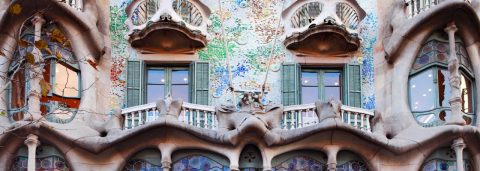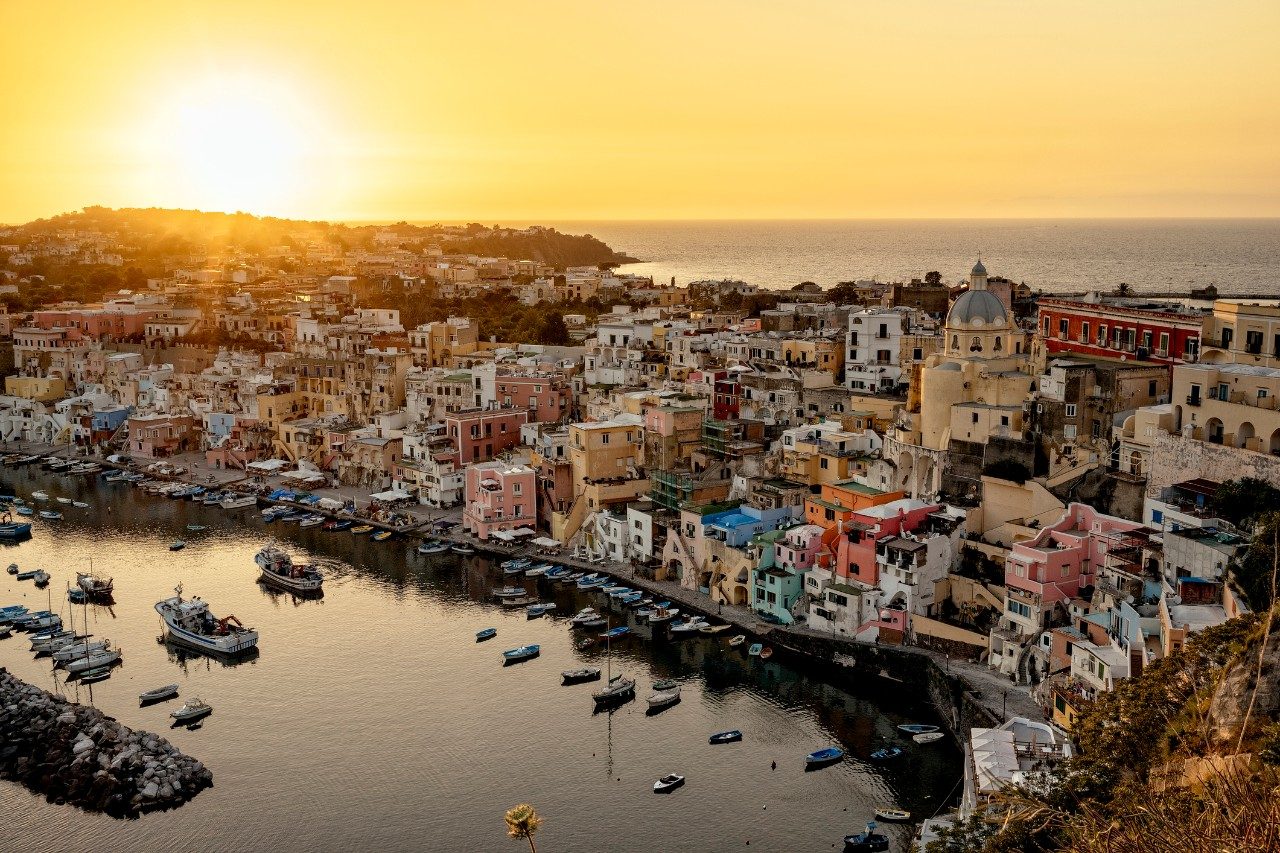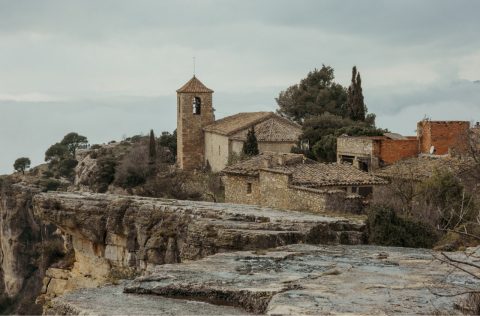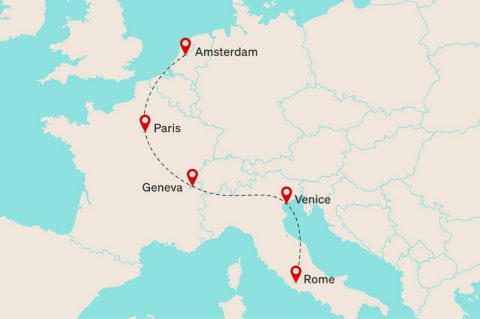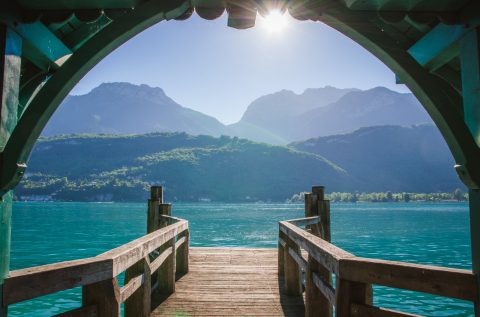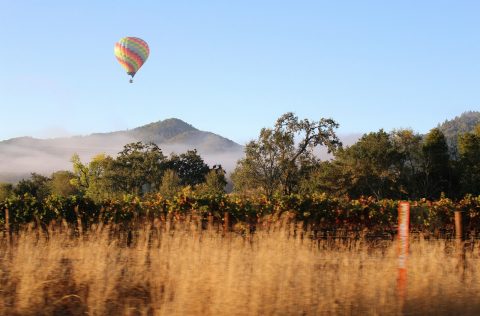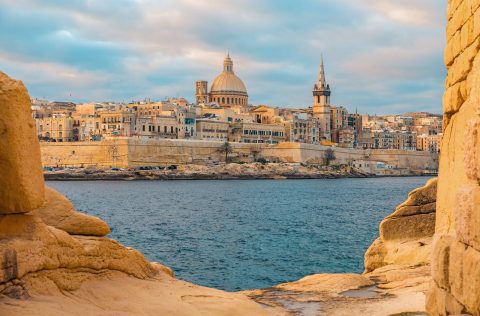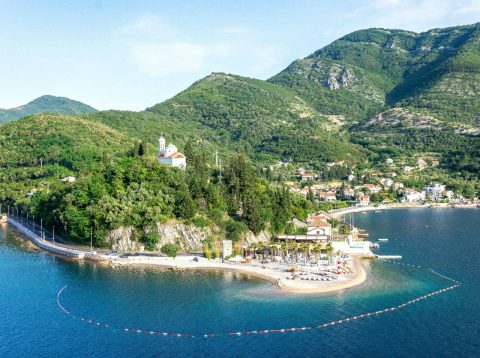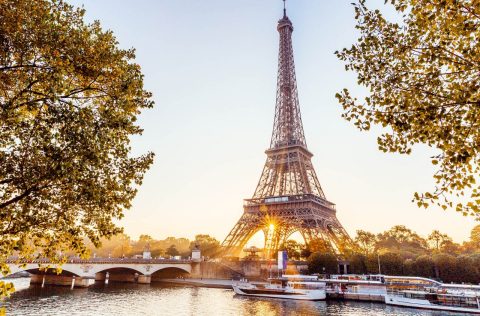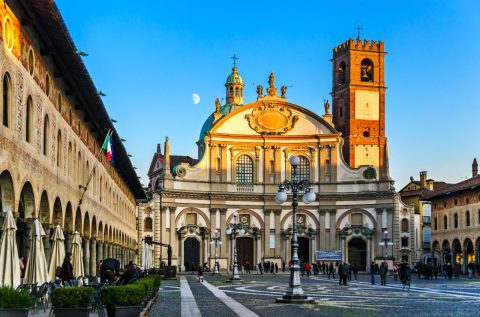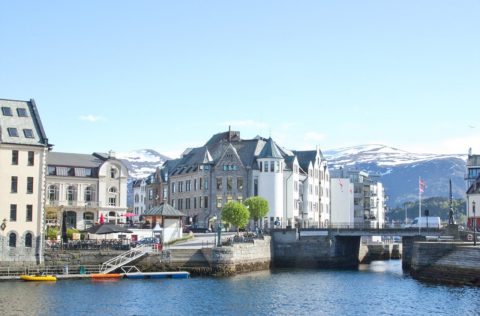Where to Drink, Eat and Stay in Rioja, Spain
In Rioja, just over an hour’s drive from Bilbao in northern Spain, two grapes reign supreme: tempranillo and viura, known as rioja and rioja blanco respectively. The region, which stretches along the Ebro River from La Rioja to Basque Country, has about 65,000 hectares of vines, more than 570 wineries and 70 or so castles. While wines made in Rioja – pronounced “ree-oh-ha” – are sold worldwide, we’re not here for the mass-market releases. Here, thousands of years of winemaking history meet Michelin-starred dining and epic mountain vistas. This our guide to the best places to eat and drink during your next visit.
For full-bodied reds: CVNE
1/8Soak up more than a century of viniculture experience at Compañía Vinícola del Norte de España, known as CVNE, a large and prestigious family-run estate that produces refined, steak-friendly reds. Tours of the circa-1880 winery in Haro, La Rioja’s wine capital, take in the ancient stone-walled subterranean cellars and end at the open-air wine bar for tastings. Exit through the cellar door shop, which sells museum releases and exclusive half bottles.
For tempranillo: Valenciso
2/8In Ollauri, just south of Haro, Luis Valentín and Carmen Enciso personally guide visitors through their organic vineyards, tasting wines in situ and offering insights in Spanish and English. The flagship Rioja Reserva is 100 per cent tempranillo and spends 17 months in French oak (for character) then two years in concrete tanks (for structure) before release.
For rare drops: Bodegas y Viñedos Pujanza
3/8Fifth-generation grape grower Carlos San Pedro was just 25 years old when he established Pujanza in 1998, striking out on his own to put a modern spin on tempranillo and viura wines in Laguardia, about 20 minutes’ drive from Haro. At the cellar door, sample “parcelas”, single-vineyard DOCa wines (the highest classification in Spain) with production so limited you won’t find them in stores.
For fine-dining: El Portal de Echaurren
4/8This fine-diner was the first restaurant in the region to earn a Michelin star; it now has two. Located inside a 125-year-old property in the village of Ezcaray, the family-run business also includes a guesthouse, tapas bar with garden terrace and El Cuartito, a bistro-style diner that sports a lower price tag than the flagship offering. Francis Paniego runs the El Portal kitchen and his award-winning tasting menu comprises at least 20 dishes, from tomato ice-cream to sweetbread-filled ravioli with caviar.
For tapas: Barrio Bar
5/8Tapas culture runs deep in Logroño, the official capital of La Rioja, where it’s customary to graze all evening. At Barrio Bar, locals drink vermouth on the rocks with an orange slice and snacks are presented in a glass-fronted cabinet. Expect skewers of fat anchovy fillets wrapped around green olives and calamari-stuffed bocadillos (bread rolls).
For wood-fired fare: Nublo
6/8Miguel Caño, whose CV includes a stint as head chef at the internationally renowned Basque restaurant Mugaritz, opened Nublo, in Haro’s Old Quarter, in 2021. Here, the courtyard of a palatial 16th-century home has been transformed into a 30-seat dégustation restaurant, with exclusively woodfired kitchens. The ingredients on the esoteric tasting menu are predominantly locally sourced and may include a flame-licked cube of Basque bonito or half a charred lime topped with raw scarlet prawn – all plated like works of art.
For a good night's sleep: Hotel Marqués de Riscal
7/8With its sinuous purple and gold metallic roof, there’s nothing subtle about 61-room Hotel Marqués de Riscal, designed by Frank Ghery. Rooms reflect the topsy-turvy scale of the property – some with curved walls, others with angled windows – while red-wine hues, blond timber and views across the medieval village of Elciego are found throughout. The property is surrounded by some of Rioja’s oldest vines and the onsite spa offers grape-based treatments.
